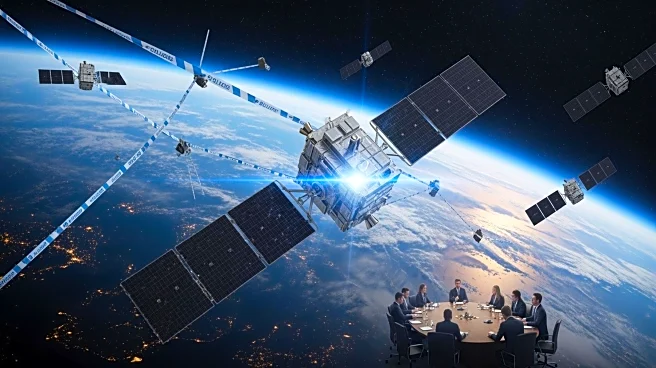What's Happening?
SpaceX has successfully launched its 10,000th Starlink internet satellite, marking a significant milestone in its mission to provide global internet coverage. The launch involved 56 additional satellites on Falcon 9 rockets, bringing the total number
of satellites in low Earth orbit to over 10,000. However, only about 8,608 of these satellites are currently operational. Starlink satellites have a lifespan of approximately five years before they are de-orbited. SpaceX has plans to launch up to 42,000 satellites, with approval for 12,000 already in place. This expansion aims to deliver fast, low-latency internet worldwide, amidst competition from other mega constellation projects.
Why It's Important?
The expansion of the Starlink satellite network is a crucial step in SpaceX's goal to provide high-speed internet access to underserved and remote areas globally. This development could significantly impact the telecommunications industry by increasing competition and driving innovation. However, the rapid increase in satellite numbers raises concerns about space debris and the potential for collisions in orbit. The success of Starlink could also influence regulatory policies and international cooperation on space traffic management and satellite deployment.
What's Next?
As SpaceX continues to expand its Starlink network, it will face challenges related to space traffic management and regulatory compliance. The company will need to address concerns about space debris and ensure the safe operation of its satellites. Additionally, SpaceX's progress may prompt responses from competitors like Amazon's Project Kuiper and other international efforts, potentially leading to increased competition in the satellite internet market. The ongoing development of Starlink will likely influence future policies on satellite deployment and space sustainability.















